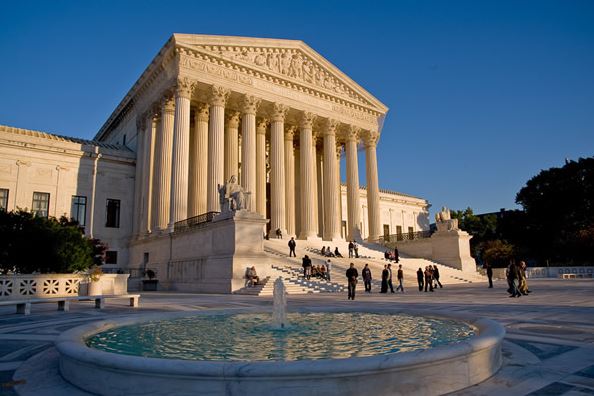The controversial performance by Miley Cyrus at the recent MTV Video Music Awards resulted in more than 300,000 tweets per minute and almost 1 million Instagram posts. These staggering numbers are indicative of the rapidly growing and increasingly influential technology known as Social TV. According to Mashable, “Social TV refers to technologies surrounding television that promote communication and social interaction related to program content.”

One of the more common occurrences of Social TV is the use of Twitter hashtags (#) for a growing number of television, sports and news shows. In fact, many of these shows have staff with the specific job of monitoring and reporting social media posts. Twitter is generally considered the most prominent social media platform for Social TV because of its near real-time nature. Facebook, with over 1 billion subscribers, is also a major player in this interactive environment.
It was therefore not surprising that Twitter bought Trendrr.com last week. Trendrr, a small four-year-old company, specializes in the monitoring and creation of social data as it relates to television. By being able to monitor social media in real time across multiple platforms, including Twitter, Facebook, GetGlue and Viggle, it is able to provide social media data for advertisers and television executives and create an effective Twitter engagement.
Social TV is about both numbers and audience opinions. Obviously, a performance like that of Miley Cyrus will evoke a massive online response, but the assessment of the content of the response is particularly critical. These responses can determine the direction of a show, the advertisements and even the level of interaction with the audience.
The number of Social TV apps is rapidly increasing. Most of these apps are free and allow users to share content and discuss what they are watching with friends on Facebook and Twitter. Since these apps can function at the level of a single episode of a TV show, they encourage real-time interaction between viewers about any facet in that episode. Several apps even award points and prizes for the quality and quantity of the interactions.
How does this technology apply to brand interaction? Given the high cost of movie production, most movies contain an extensive amount of product placement. For example, Skyfall, the latest James Bond movie, had no less than 28 product placements. Now, imagine extensive brand placement on television and online videos. Through Social TV, these brands can be seen, discussed and promoted. Online interactions are carefully monitored with the critical information being supplied ”” in near real-time ”” to the key stakeholders and promoters. The critical element in this entire panoply is the connecting of the audience through Social TV.
This past May, Twitter began a beta test that combined Twitter with TV advertising. According to their blog, “During a handful of studies, users that Twitter identified as being exposed on TV and then engaged with a promoted Tweet demonstrate 95 percent stronger message association and 58 percent higher purchase intent compared to users identified as being exposed on TV alone.” That Twitter is now heavily promoting Twitter TV ad targeting is not surprising and readily explains their recent Trendrr acquisition. It is also safe to assume that many other companies have taken notice.
So, on one level, we can see the growing relationship between Social TV and television in that it promotes conversations and interactions among viewers. On a completely different level, these interactions become the fodder for extensive, targeted marketing and advertising campaigns. Especially with the rapid rise of mobile, expect this hot area to rapidly expand and evolve.
Bruce Newman is the president of wwWebevents.com, a division of The Productivity Institute L.L.C., and the creator of The Complete Webinar Training Course, an online course that helps companies create and promote highly successful webinars. He can be reached at bnewman@prodinst.com.




















Looking at what a vocal minority thinks is the most brain-dead thing a TV show can do.
TV (and film) isn’t a product like any other. It is an artistic endeavor that just can’t be any good if it is the result of committee decisions.
It’s bad enough TV and film are worse and worse because of the prevalence of studio and network “notes” (ie. writing and producing by committee) but the idea of adding an unrepresentative subset of your audience as co-writers is downright insane.
Never mind that TV networks get plenty of feedback with actual representative ratings and they ignore that (for instance by renewing flops like New Girl).
Saying that “social media” is important has become another PR spin reason to keep flops on the air.
Also, number of tweets is something that is not assessed independently, doesn’t bring a penny to the network and can be manipulated fairly easily, but yes, let’s let that determine our programming…
Rena,
I agree, but only to a point. Before most movies are released, they are previewed by selected audiences for their feedback. And, as a result of this limited feedback, both the script and the marketing of that particular movie can be significantly altered.
It’s the same reason why companies air commercials to focus groups prior to them hitting the airways. Those focus groups can also determine the fate of the commercial or even the company that produced it. (I’ll be glad to tell you about a personal experience with the latter.)
The bottom line is that there’s a lot of money and publicity involved with TV and film. And like it or not, social media is increasingly playing an important role in both of these areas.
Using the MTV awards ceremony for example, the fact that Miley Cyrus was able to generate such a widespread reaction that reached even to traditional media is indicative of social media’s growing power and the publicity that accompanies it. It’s great publicity that the promoters strive for.
Many examples abound. For The Next Great Chef (or something like that on The Food Network), the network let their audience decide who would become a TV chef on their network based solely on the number of votes each finalist received through their website. For better or worse, it’s that interaction, that connection with the audience that TV and Film is increasingly striving to make.
Which leads to the increasingly important questions: To what lengths will they go to reach their viewers (or potential viewers) and what degree of importance do they assign to them?